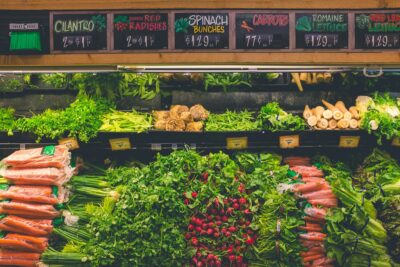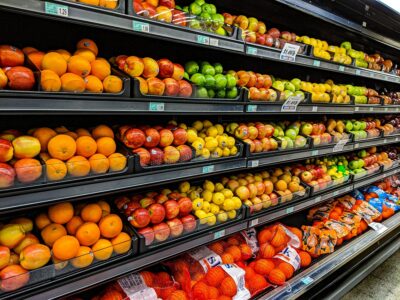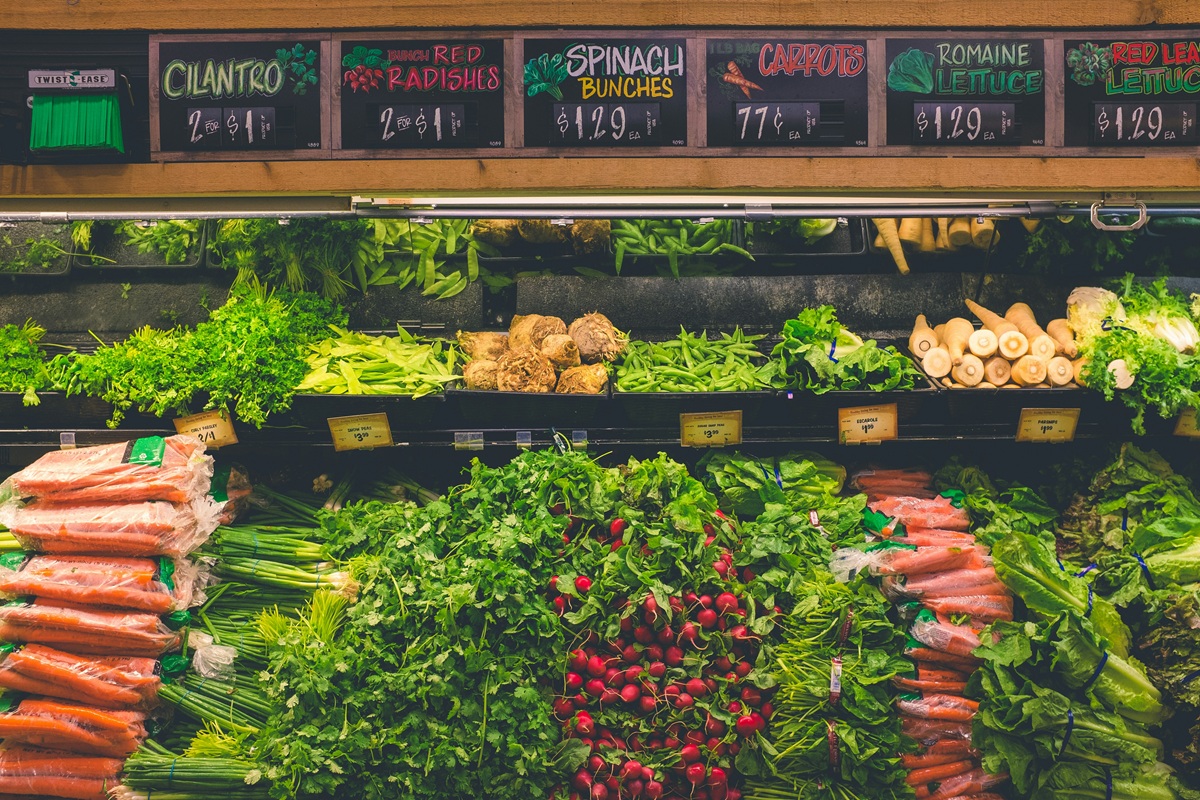Groceries can quietly eat up a large portion of your monthly income. The good news? With a few clever moves, you can slash your food expenses with

Groceries can quietly eat up a large portion of your monthly income. The good news? With a few clever moves, you can slash your food expenses without sacrificing quality or flavor. Even adopting just one of these money-saving tricks can add up to big savings over time. But if you commit to all twelve, get ready to see a noticeable boost in your bank balance. Grocery Shopping Tricks.
1. Go for Frozen Fruits and Veggies- Grocery Shopping Tricks
If you want your money to go further in the produce aisle, don’t skip the freezer section. Frozen fruits and vegetables often get a bad rap, but here’s the secret—they’re usually picked at their ripest and frozen almost immediately. That means all the goodness—flavor, color, and nutrients—is locked in.
The best part? They don’t go bad in a few days like fresh produce sometimes does. No more feeling guilty about tossing out a carton of moldy berries or a bag of wilted greens. You can use only what you need and pop the rest back in the freezer for later.
And here’s a bonus—frozen options are often cheaper than fresh, especially when that fruit or veggie isn’t in season. So you get the taste, the nutrition, and the savings, without any waste.

2. Plan Your Meals
Think of meal planning as the “ounce of prevention, pound of cure” for your grocery budget. When you take a little time each week to map out what you’re going to eat, you’re not just solving the dreaded “What’s for dinner?” dilemma—you’re also saving yourself a lot of unnecessary spending.
With a plan in place, you’ll walk into the store with purpose. No more tossing random items into your cart “just in case” or realizing halfway through the week that you’re missing a key ingredient. Instead, your shopping list is focused on exactly what you need for the meals you’ve planned, which means less waste, fewer impulse buys, and a lot less stress.
Plus, meal planning lets you get creative. You can reuse ingredients across multiple recipes, make the most of sales, and even prep some meals in advance to save time on busy days. It’s a small habit that can make a big difference in both your wallet and your peace of mind.
3. Try the 6-to-1 Rule
If full-on meal planning feels a bit too structured for you, the 6-to-1 rule is a great middle ground. It’s simple, flexible, and still keeps your grocery bill in check. Here’s how it works: when you shop, aim for six different veggies, five fruits, four protein sources, three starches, two sauces or spreads, and one “just for fun” item you’ve been curious to try.
This little formula gives you enough variety to mix and match meals throughout the week without overbuying or wasting food. The focus on fruits and vegetables not only boosts your health but also tends to be easier on your wallet compared to loading your cart with processed snacks and ready-made meals.
The beauty of this rule is that it encourages balance—plenty of fresh produce, enough protein to keep you satisfied, a few carbs for energy, and just a touch of indulgence to keep things enjoyable. Plus, it turns grocery shopping into a bit of a game, where your “fun food” can be anything from a new type of cheese to an interesting spice blend.
4. Take Inventory Before You Shop
A quick peek into your fridge and pantry before heading to the store can save you from some… let’s call them egg-sized mistakes. (True story: once we stocked up on eggs without realizing there were already a few dozen hiding in the mini fridge. Let’s just say breakfast-for-dinner became a theme for a while.)
Before you grab your shopping bags, spend a few minutes checking what you already have in your fridge, freezer, and pantry. Make a short list of what’s running low and what you have plenty of. This simple step keeps you from doubling up on items you don’t need while accidentally forgetting the ones you do.
Not only does this cut down on food waste, but it also saves money—and spares you from the “Why do we have five jars of peanut butter?” moment. It’s a small habit that makes your grocery trips faster, cheaper, and more intentional.
5. Shop What’s in Season- Grocery Shopping Tricks
One of the easiest ways to save money—and eat better—is to let the seasons guide your grocery list. When fruits and vegetables are in season locally, they’re fresher, tastier, and often far cheaper than their out-of-season counterparts.
Take tomatoes, for example. In February, those bright red ones in the store have likely traveled hundreds or even thousands of miles. This is from places like Mexico, Florida, or California. All that travel adds to the price you pay, and by the time they reach your kitchen. The flavor can be… underwhelming. But in July, when tomatoes are bursting from local farms. They’re abundant, packed with flavor, and much easier on your wallet.
Seasonal shopping not only saves you money but also keeps your meals interesting. As the weather changes, so does your menu—think crisp apples and squash in the fall, sweet berries in the summer, and hearty greens in the winter. You’ll spend less, enjoy better-tasting food, and maybe even discover a new favorite ingredient along the way.
7. Take Advantage of Rewards and Loyalty Programs
If you tend to shop at the same one or two grocery stores, don’t miss out on the perks of their loyalty programs. Signing up is usually free, and all it takes is swiping a card or entering your phone number at checkout to unlock in-store discounts you’d otherwise miss.
These programs often go beyond just shaving a few cents off here and there. You might get access to exclusive promotions—like a big percentage off a single order, special coupons tailored to your shopping habits, or even seasonal freebies (hello, free Thanksgiving turkey). Some stores also offer points you can accumulate over time and redeem for cash off your bill, fuel discounts, or other rewards.
The best part? It’s a set-it-and-forget-it kind of savings tool. Once you’re signed up, the deals practically find you. Just remember to keep your account active by using it regularly, and you’ll be surprised how much you can save over the course of a year.
8. Be Smart About Bulk Buys
Bulk shopping can be a money-saver’s dream—stores like Costco, Sam’s Club, and warehouse markets are famous for offering big portions at lower prices per unit. But before you toss that giant tub of hummus or a 24-pack of yogurt into your cart, it’s worth pausing to ask yourself two simple questions:
-
Do I like this enough to eat it regularly?
-
Can I finish it (or freeze it) before it goes bad?
That massive container of salad greens might seem like a great deal compared to smaller grocery store packages. But if you only get through a quarter of it before it wilts, you’re not saving money—you’re throwing it away.
Bulk buying works best for pantry staples, frozen items, or foods you truly love and eat often. It’s also a great way to save on household essentials like rice, pasta, beans, spices, and snacks with a long shelf life. The key is knowing your household’s eating habits and storage capacity so your bargain buys actually stay bargains.
9. Hunt for Sales and Coupons- Grocery Shopping Tricks
You don’t need to be a hardcore coupon clipper to score great grocery deals. Most stores post their weekly sales flyers online. Therefore, you can check what’s on special before you even grab your shopping bag. A quick look at these deals can help you plan your meals around what’s cheapest that week—saving you money without much effort.
If there’s a big-brand product you love and buy regularly, head to the brand’s website or sign up for their email list. Many companies offer printable or digital coupons that can be used on top of in-store sales, doubling your savings.
And don’t forget about store apps—many now have built-in coupon sections that you can “clip” with a tap. This automatically applying the discounts at checkout. It’s a small habit that can add up to big savings over time, and all it really takes is a couple of minutes before you shop.
10. Skip the Pre-Packaged Convenience Items -Grocery Shopping Tricks
Those pre-sliced melons, baby carrots, or ready-to-cook veggie packs. This can be tempting—after all, they make healthy eating quick and easy. But here’s the catch: you’re paying a premium for that convenience. In many cases, you could get twice as much food for the same price if you buy the whole item and do the slicing yourself.
There’s also the freshness factor. Pre-cut produce tends to spoil faster than whole fruits and vegetables because it’s already been exposed to air and handling. That means you could end up tossing it out before you have a chance to enjoy it, which is a waste of both food and money.
By taking just a few extra minutes to wash, chop, and store your own produce. You’ll stretch your grocery budget and keep your food fresher for longer. Plus, you have more control over the size, shape, and quality of the pieces. Perfect if you like your carrot sticks a little chunkier or your melon cut just right.
11. Shop Smarter for Meat
If you’re trying to lower your grocery bill, start with the big-ticket items—and meat is often one of the most expensive parts of the cart. The good news? You don’t have to give it up entirely to save money; you just need to shop strategically.
Look for cheaper cuts that still pack plenty of flavor. For example, top round beef is far less expensive than a porterhouse steak, yet it can be just as satisfying when cooked the right way. Slow cooking, marinating, or braising can turn even budget-friendly cuts into tender, delicious meals.
You can also stretch meat further by pairing it with other protein sources like beans, lentils, or tofu. Think hearty stews, casseroles, and stir-fries where meat plays a supporting role rather than being the whole show. And of course, trying the occasional meatless meal—like veggie chili or mushroom pasta—can make a surprisingly big difference over time.
Small swaps in your meat-buying habits can add up to significant savings, all while keeping your meals tasty and filling.
12. Cut Down on Food Waste -Grocery Shopping Tricks
Wasting food isn’t just bad for the environment—it’s like throwing money straight into the trash. In fact, a Gallup poll found that the average American household tosses out around six cups of food every week. That adds up to roughly $1,500 a year in wasted groceries.
The good news is, you can cut this number down dramatically with a few simple habits. Many of the tips we’ve already covered—like meal planning, checking your fridge before shopping. Buying frozen produce, and freezing extra portions—naturally help reduce waste.
Another powerful trick? Get creative with leftovers. Turn last night’s roast chicken into a hearty soup, use extra veggies in an omelet, or blend overripe fruit into smoothies. Even small changes in how you store and use food can make a huge difference.
By being intentional with what you buy and how you use it, you’re not only saving money. You’re respecting the time, effort, and resources that went into producing that food in the first place.




COMMENTS